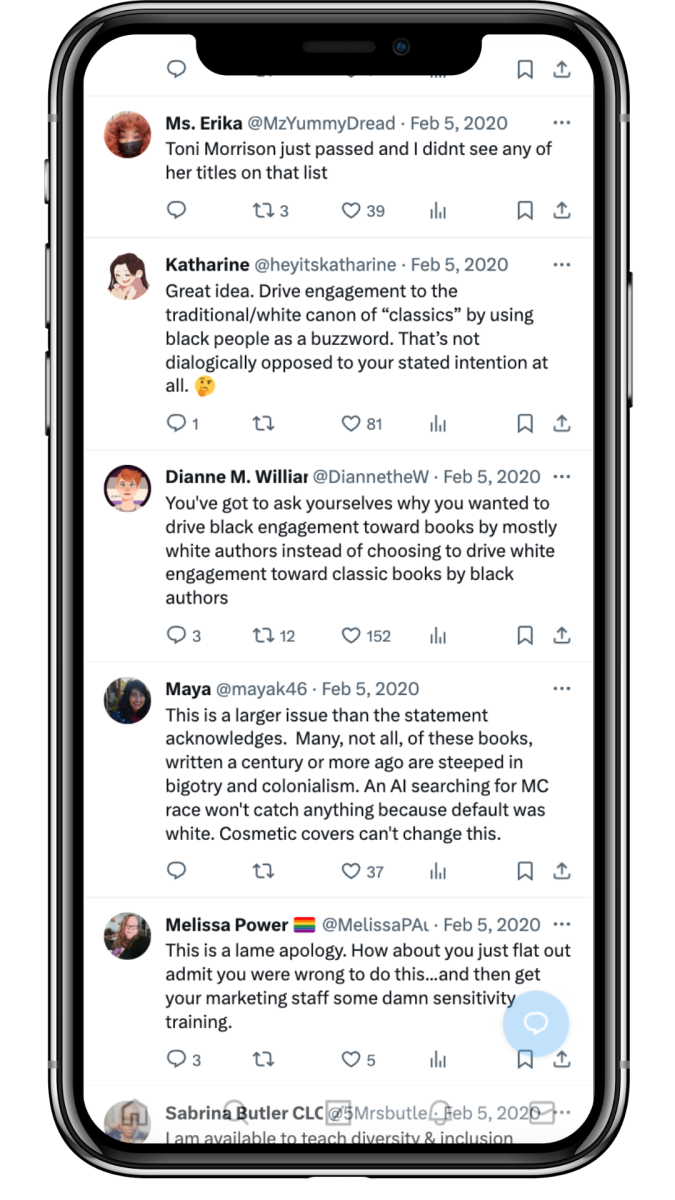
Creating Mindful Black History Month Marketing Content
Black History Month is a time when people learn about Black American excellence, communities rally to support Black businesses, and companies unfortunately find new and hollow ways to say they celebrate Black history all year long.
Start With Some Context
In the U.S., we honor the occasion in February—the shortest month of the year—because it boasts the birthdays of Frederick Douglass (an inspirational abolitionist and social reformer) and Abraham Lincoln (a white former president who thought Black people deserved fewer rights and should resettle in Africa or South America).
You may wonder, “Whoa, why would you come at Honest Abe like that?” Well, because (a) it’s a widely unknown fact and (b) if your company is going to acknowledge the month, you need to have a base level of context and historical cultural competence or else your posts may also seem hollow.
While the awareness month was conceived by scholar Carter Woodson in 1926, it wasn’t federally adopted until 50 years later. A lot has shifted since ‘76 in racial equality and discourse, for better or for worse, but in marketing, one question has remained constant: how do brands celebrate? As businesses increasingly start to see Black History Month (BHM) as an opportunity to connect more deeply to Black customers, I suspect brands will continue to struggle with how to engage with it.

To BHM Or Not to BHM
You’ve probably heard the horror stories about major corporations trying (and failing) to honor Black History Month. And if you have, you may feel some hesitation about acknowledging it on social media, on your website, in your sales, etc. And that hesitation is warranted—healthy, even. But don’t let that scare you!
Deciding if and how to create Black History Month marketing content isn’t actually as tough as it may sound. But it does require team effort and a bit of courageous investigation.
Ask Your Team These Questions
First and foremost, it’s crucial that one person isn’t making the sole decision to acknowledge or not acknowledge BHM. It must be a collective conversation. I strongly suggest getting a coalition of people together and asking yourself five questions. And if you’re not prepared to do the initial work of asking the hard questions, then you’re probably not prepared to create mindful Black History Month content for your brand.
1. Do you know what you’re doing?
Your company has to have an appropriate level of language and knowledge. You may feel strongly that your company should post on TikTok about it, but do your content creators have the cultural competence and historical context to truly know what they’re doing?
Even if your answer is, “No, we don’t,” that doesn’t mean you can’t celebrate BHM. But it definitely means you shouldn’t act like you know what you’re doing. Unless you’re a Black-owned business or are otherwise deeply informed, don’t take an educator’s position. Nothing’s more cringe than a company with an all-white executive team “teaching” their Facebook followers Black history facts.
The hardest part here is that every company that ever published a problematic BHM post thought it had the appropriate language and knowledge. Consider Bath & Body Works’ 2022 Black History Month campaign. Somehow, at no point from ideation to production to marketing did anyone say, “Slapping a kente-cloth pattern and a higher price tag on an existing fragrance is a bad idea, guys.” Or, worse, someone did and they were dismissed because the decision makers—sigh—didn’t know what they were doing.
2. Who bears the burden of the content?
Whoever has to create the content must consent to doing so. Do not force your team—especially your Black employees—into unpaid labor, even if it’s simply the emotional labor of having to tell you “no” or “I don’t want to.” Plus, you need to make sure that, even if your social media team knows what they’re talking about, your leadership team does too. Otherwise, you create a situation where those with the power to make change are the only ones who don’t know what to change or how.
In addition to ensuring the right people share the responsibility of creating the content, you must implement a sense of checks and balances. So many BHM campaigns have made it to the public eye that never would’ve seen the light of day had the right people had a say in the process.
3. Does it make sense for your brand?
The last thing you want to do is look like you’re pandering. If social or racial justice isn’t a part of your brand’s ethos, then launching a Black History Month campaign will likely look like a sad attempt to get more money from Black consumers. If you don’t acknowledge or support your Black customers at any other point of the year, then you may want to forgo posting the random photo of Martin Luther King, Jr. on your LinkedIn feed.
Who can forget the Pepsi commercial heard ‘round the world? Amidst international protests against police brutality, the world’s second-favorite soda brand decided to hire Kendall Jenner, a wealthy white woman, to star in a commercial where she seemed to “solve racism” by handing a can of Pepsi to a riot-gear-laden police officer at a public confrontation. Not only was it a scandalously bad concept, it had nothing to do with the brand’s values or products whatsoever.
4. Are you prepared for what’s next?
 Most brands opt to post a simple photo of a Black civil rights leader with a superimposed quote that won’t rock any boats. But even then, there’s always the possibility of backlash—whether from a conservative audience who is opposed to the awareness entirely or from a more progressive audience who feels like what you’ve done doesn’t hit the mark or isn’t enough. In addition to ensuring you’ve created mindful content, you need to make sure you’ve also planned for mindful engagement with your audience once the campaign has launched.
Most brands opt to post a simple photo of a Black civil rights leader with a superimposed quote that won’t rock any boats. But even then, there’s always the possibility of backlash—whether from a conservative audience who is opposed to the awareness entirely or from a more progressive audience who feels like what you’ve done doesn’t hit the mark or isn’t enough. In addition to ensuring you’ve created mindful content, you need to make sure you’ve also planned for mindful engagement with your audience once the campaign has launched.
Explore all possible outcomes with the responsible team. This is not only so your brand can respond appropriately and quickly, but also so your team can talk about why that backlash is even possible. Think of it as an opportunity to grow your competency and cultural sensitivity. If you don’t, it could backfire. Here’s looking at you, Barnes & Noble circa 2020.
5. How is the content tied to larger initiatives?
A one-and-done post won’t cut it for Black History Month. It has to be tied to a larger campaign or initiative or value set. If your company isn’t doing anything specifically for the Black community, then it will be painfully transparent that your campaign is just for your company’s image. Make sure that the way you engage BHM does not feel like it comes out of left field. (And please, please don’t talk vaguely about “people of color.” It is a time to talk intentionally about Black people.)
At the end of the day, a great question to ask is, “Do we promote Black excellence over there or do we promote and cultivate it right here?” Do you have initiatives to support Black team members? Do you have any sort of cultural programming or training? Do you elevate Black employees to positions of power and retain them? If your answer to those questions is “no,” then your post is simply that: a post.
Know What Not to Do
There’s no “one right way” to celebrate BHM as a company. On the other hand, there are definitely plenty of wrong ways to celebrate it. Knowing what not to do or say can be equally as important as choosing what you do want to do or say.
❌ Don’t simply say you’re celebrating. Say how.
Sharing a post that says, “Today, and all month long, we honor and celebrate Black history,” is not enough. In fact, it’s nothing. If someone says, “I celebrate your birthday,” but they don’t say, “Happy birthday,” or give you a gift or throw you a party, then does it sound like they really care? No, it doesn’t. Add depth. Tell your audience how you plan to celebrate Black History Month. And if you’re not doing anything worth mentioning, then perhaps don’t post at all.
❌ Don’t simply give money. Give time and energy.
Don’t only give money. By all means, give money, but don’t let that be the only action you take. While financial support of Black organizations is critical, in a way, it says, “I’ll let someone else do the work.” Instead of—or in addition to—a fiscal contribution, consider a team meeting to learn about Black Americans’ contributions, or treat your team to lunch from a local Black-owned restaurant. They’re not earth-shattering ideas, but they’re better than telling the EA to send $100.
❌ Don’t simply celebrate your team. Elevate them.
The best way to honor Black history is by making Black history. Create structure within the company to give your Black employees more decision-making power. Ask them each individually what you can do to make the workplace more equitable, and then do something about it. Share them and their accomplishments on social media or your website—with their permission, of course. But whatever you do, make sure it’s meaningful and elevates them and doesn’t just make you look good.
Partner Up for Accountability
If this feels like too much work just to post about Black History Month, then I’d recommend you avoid creating BHM content altogether (and explore why it’s not an investment you’re willing to make).
If you are ready to “do the work,” then wonderful! As long as you ensure your team is educated about and on the same page about Black History Month, and that know what not to do, you should be clear to create great content to commemorate the awareness month. However, a little accountability never hurt.
If you’d feel more comfortable with a second set of eyes from a team with diverse backgrounds and cultural perspectives, contact us. We’re always down to elevate your brand.